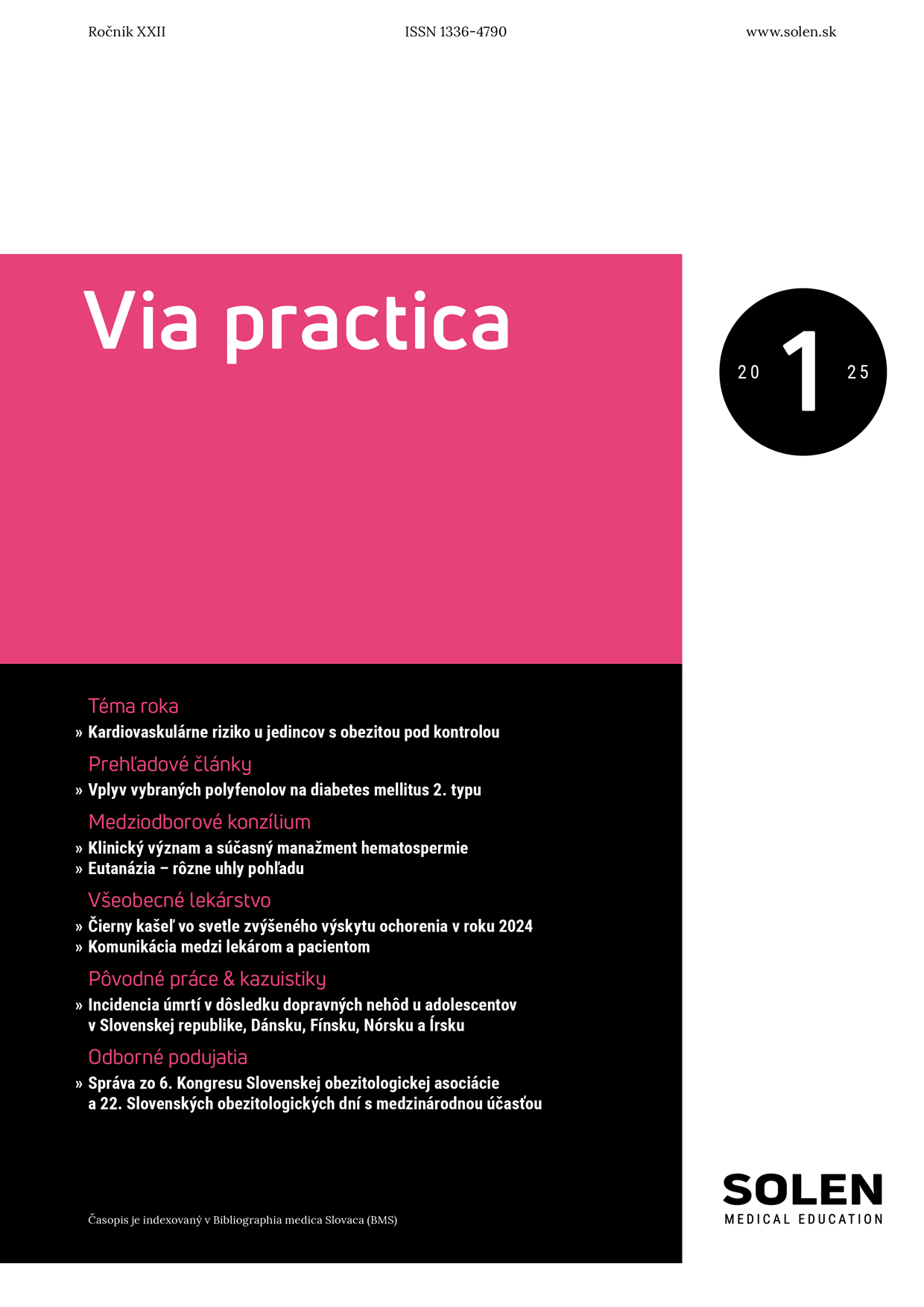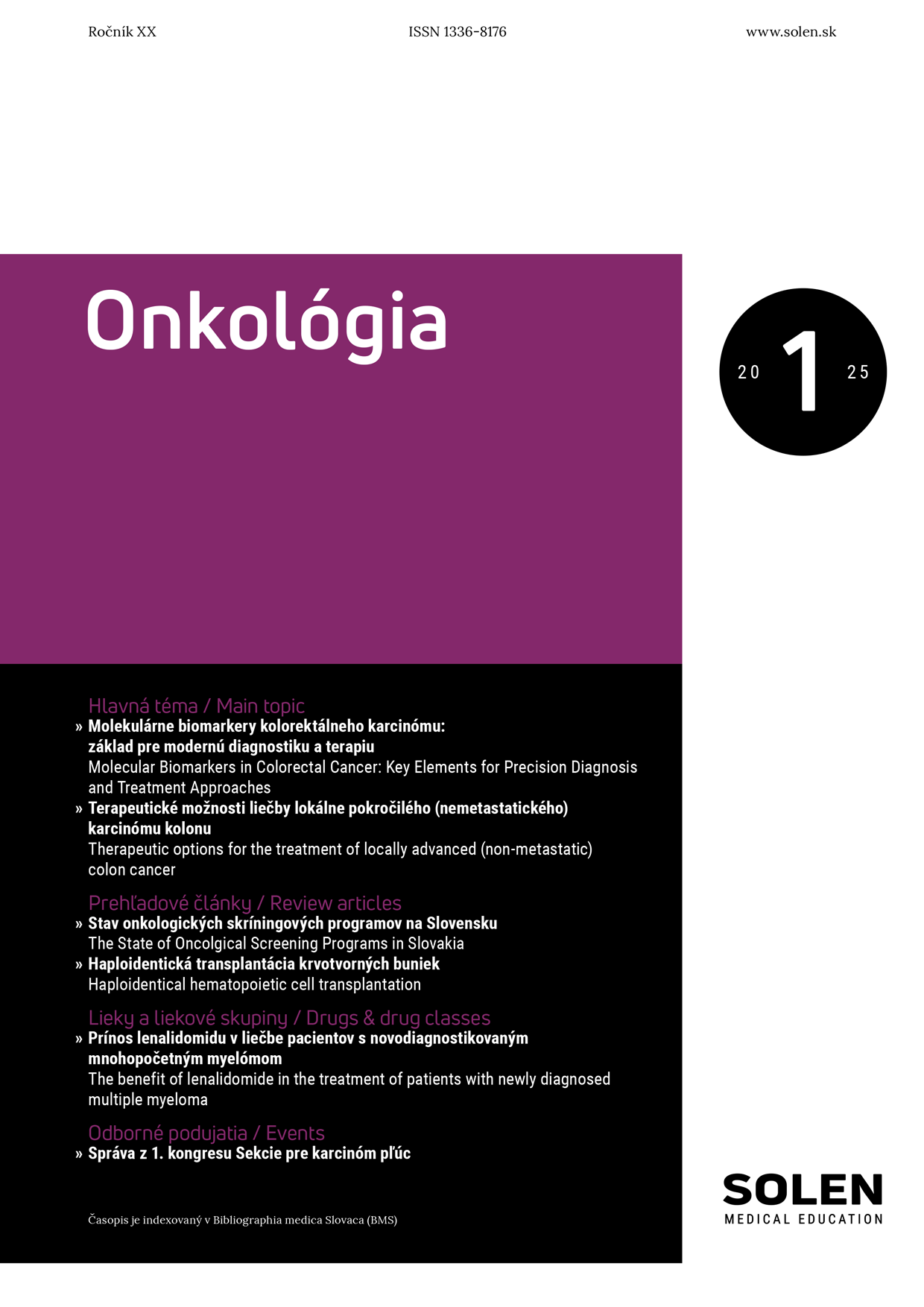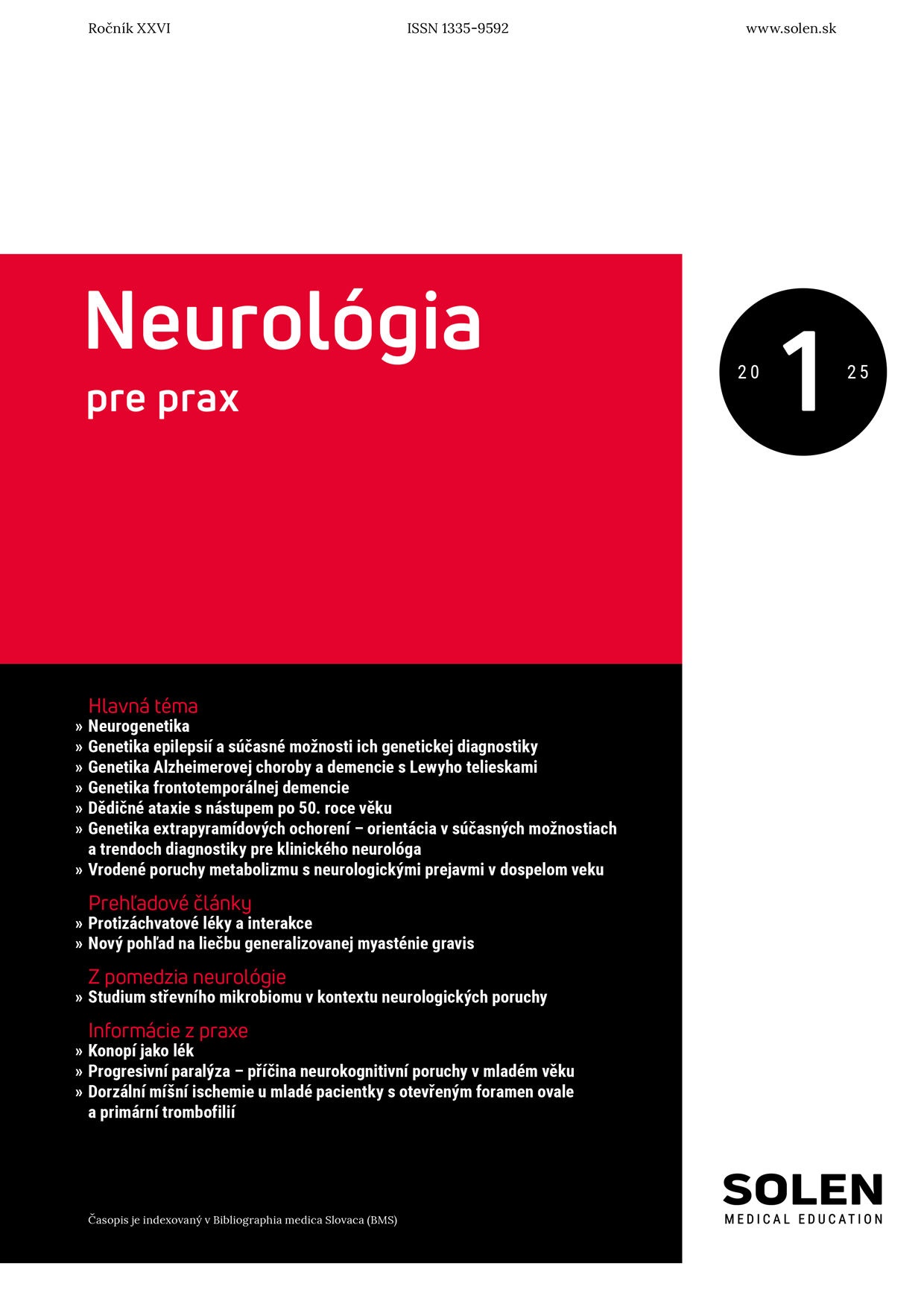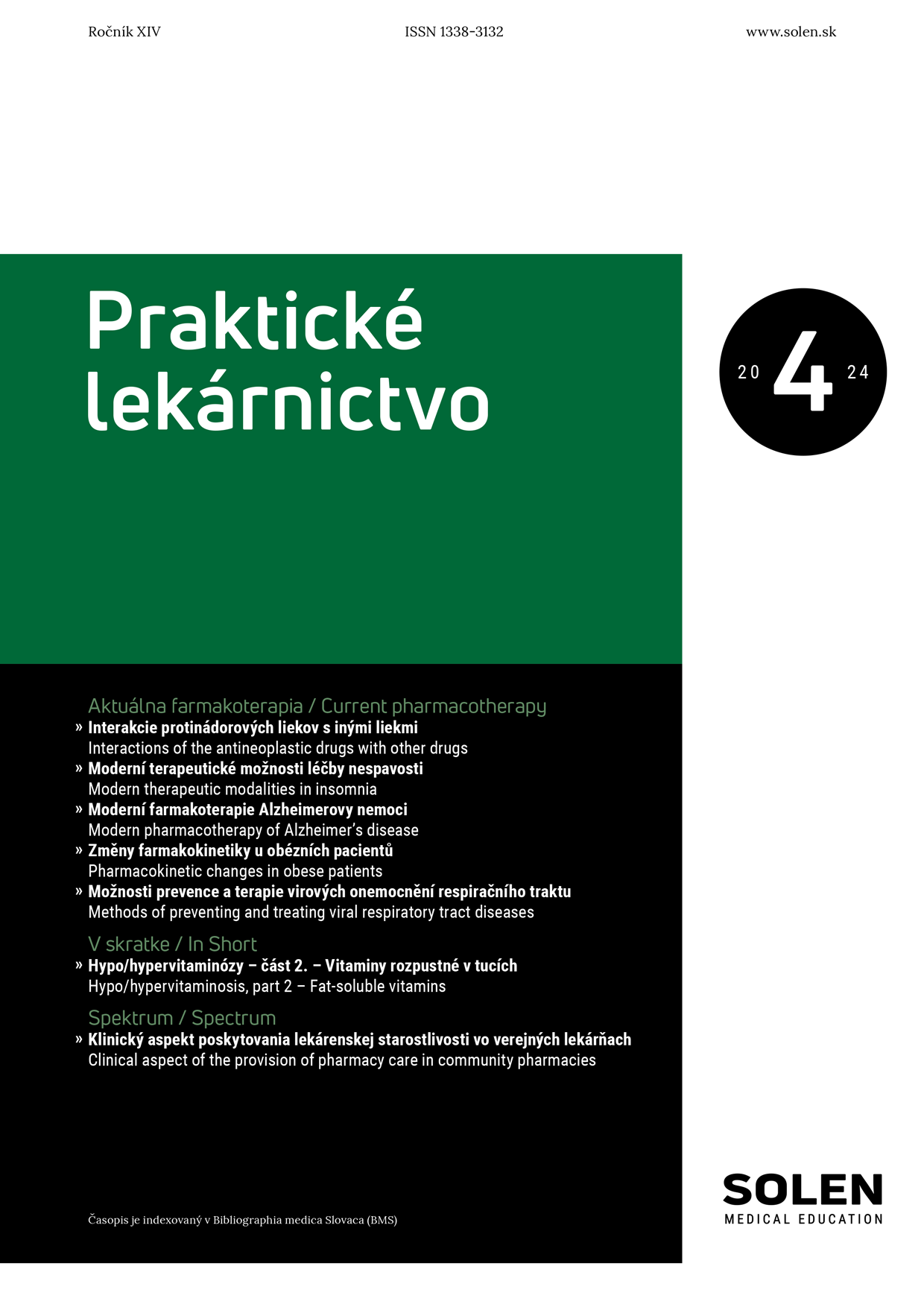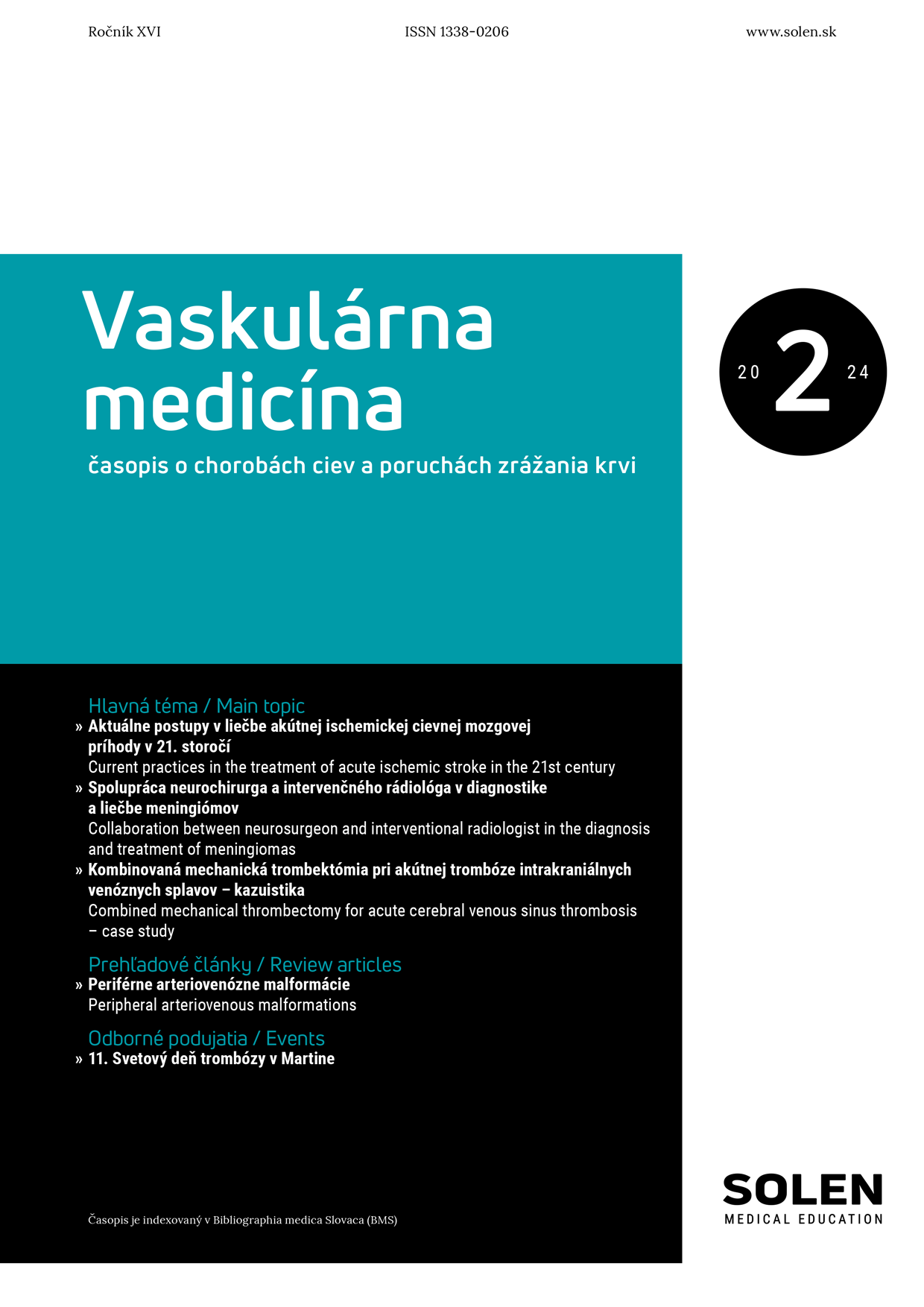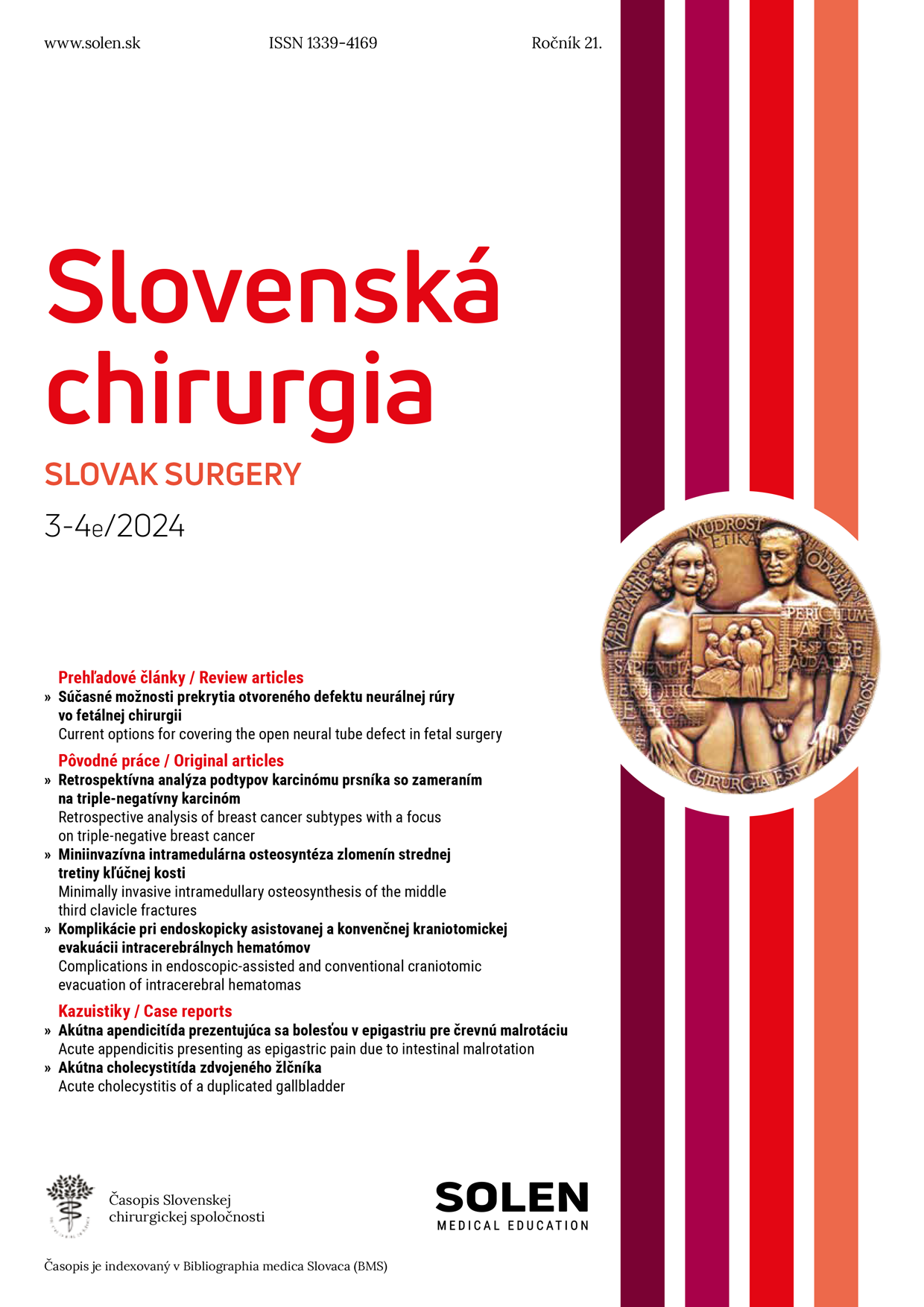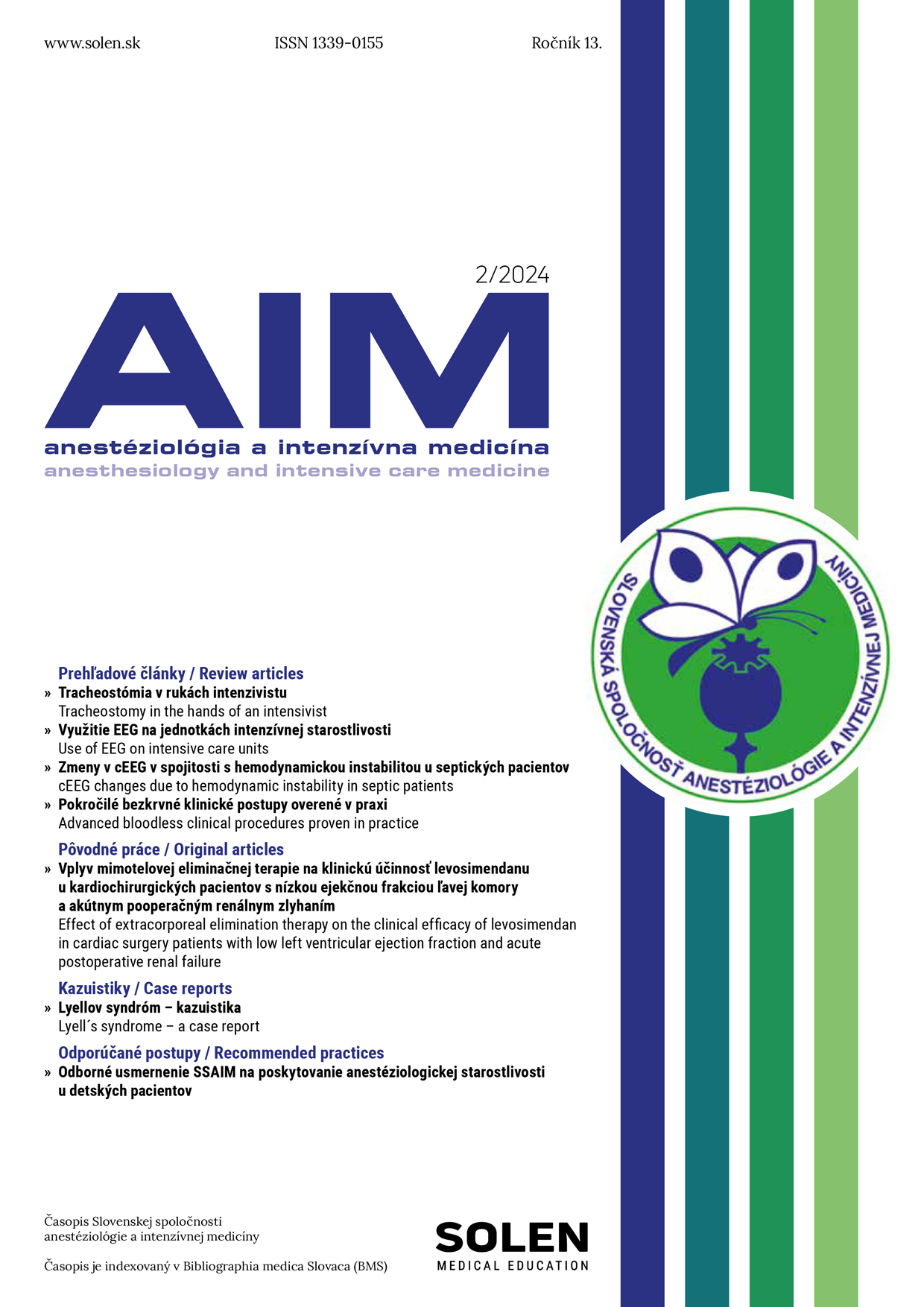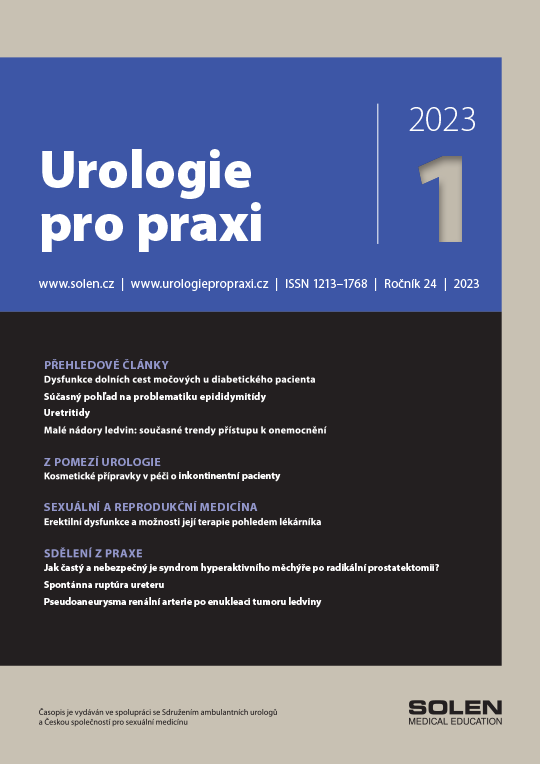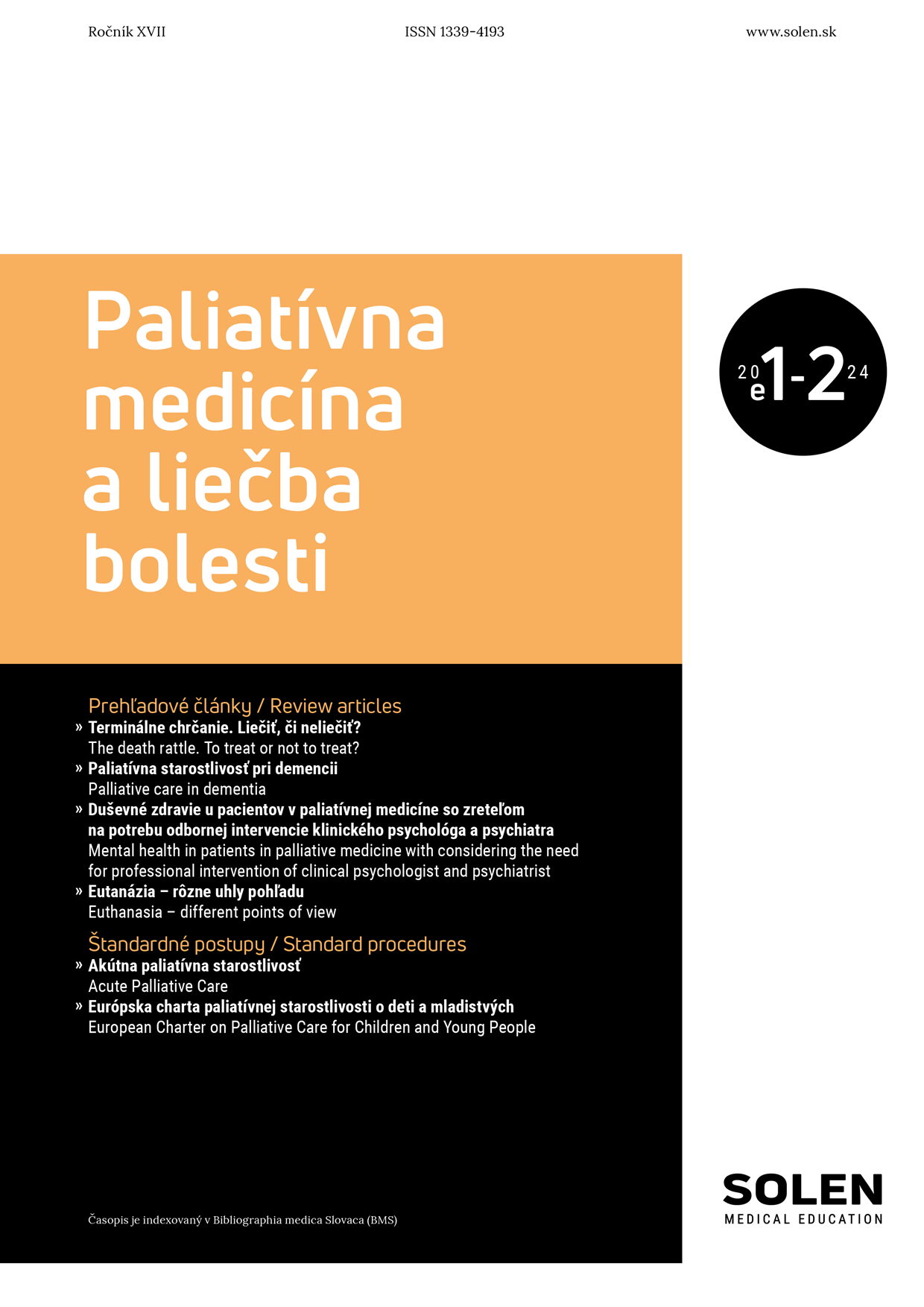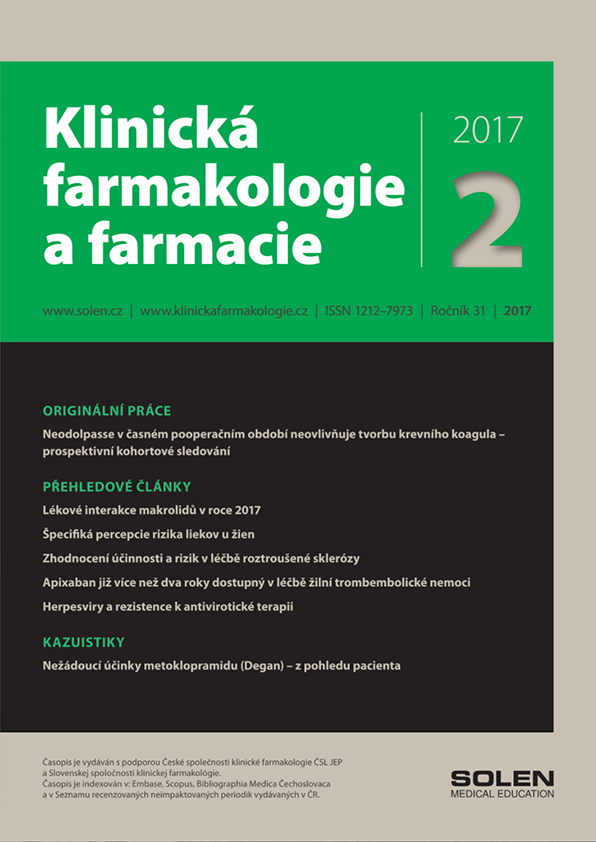Neurológia pre prax 1/2025
Anliseizure medications and interaction
Pharmacological treatment of epilepsy is more and more complex, requiring comprehensive knowledge and clinical experience. Up to one-quarter of people with epilepsy take more than one antiseizure medication, and they have frequent comorbidities, as well as acute or chronic intercurrent diseases requiring the administration of other drugs. Pharmacokinetic and pharmacodynamic drug interactions are usually well described and information about them is easy to find. We know less about drugs' active influx/ efflux transport both during their absorption from the gastrointestinal tract and their transfer across the blood-brain barrier. When choosing a combination(s) of antiseizure medication and/or drugs for other indications, the neurologist needs to know whether a clinically significant interaction can occur between them, what its mechanism and manifestations are, how high the probability of its occurrence and how severe it will be.
Keywords: interaction, pharmacokinetic, pharmacodynamic, hematoencephalic barrier, antiseizure medication, pharmacotherapy of epilepsies



